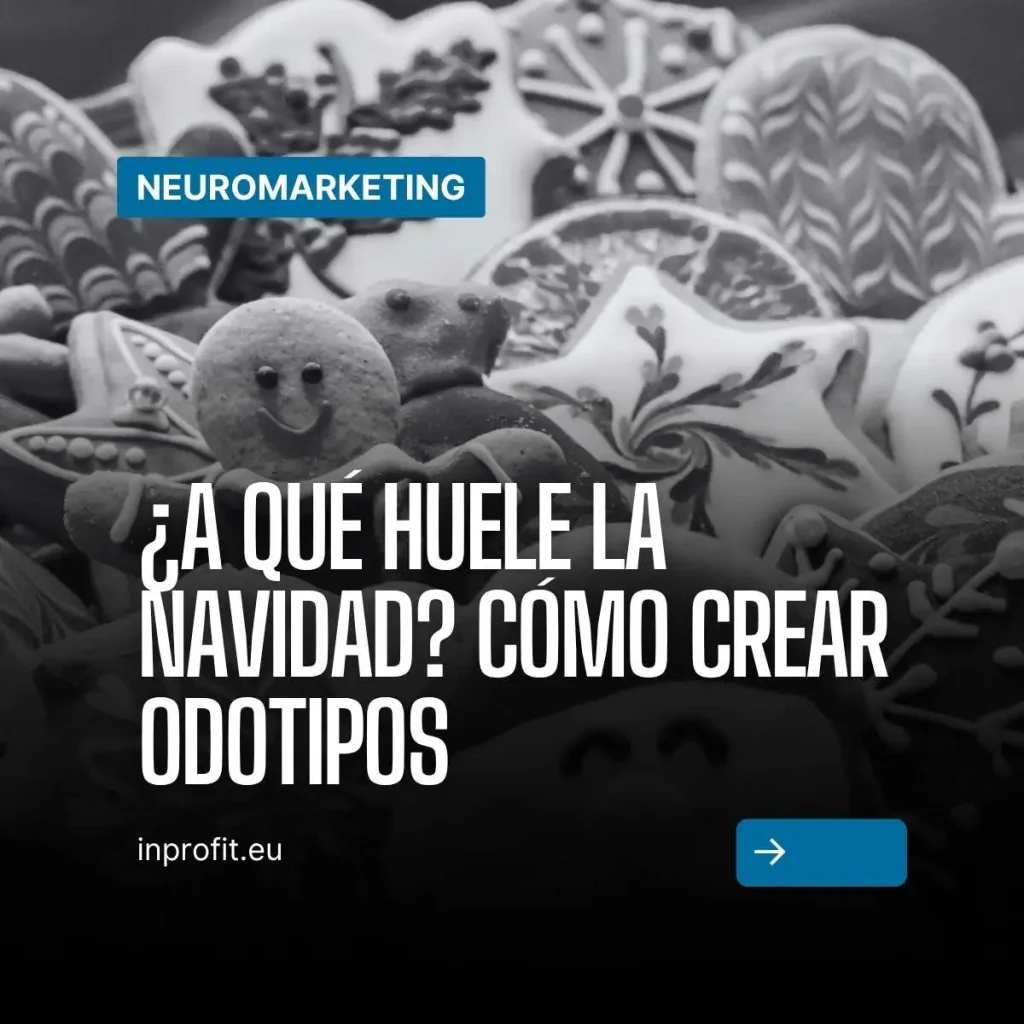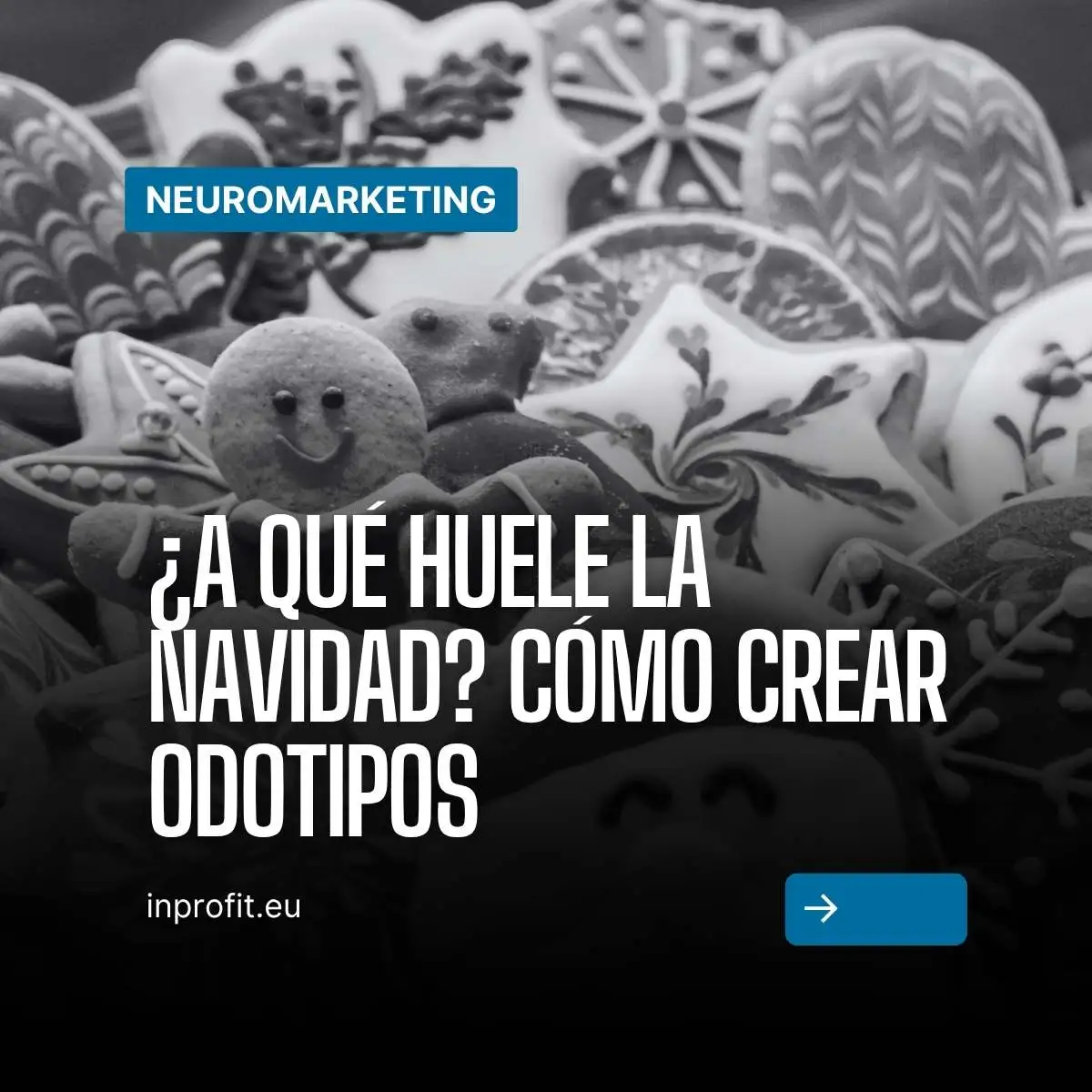There are campaigns that are seen and campaigns that are remembered. Christmas campaigns can also be smelled. Smell is the most emotional sense and the one that connects more quickly with memories and moods. That’s why, when a brand gets its odotipo -its “olfactory logo”- right, it can transform a visit into an experience and a specific purchase into loyalty.
In this post I tell you, with a practical approach, how to design a Christmas odotipo that reinforces your brand identity and works in retail, hospitality and corporate spaces. No smoke (only incense smoke, if it fits with your branding).
What is an odotype and why does it matter to you at Christmas?
An odotype is a distinctive and registerable aromatic composition that identifies your brand in the same way as a logo or a tone of voice. At Christmas, consumption becomes emotional, affluence increases and visual and sound stimuli proliferate. Differentiating yourself through smell is a clear competitive advantage: it guides attention, generates well-being and triggers positive memories associated with the festive period.
In addition, a good Christmas odotipo is memorable but not invasive. It must coexist with decorations, music and high traffic without saturating. And this is achieved with methodology, not with “cinnamon sprays everywhere”.
Christmas scent palette: much more than cinnamon and pine
Christmas is not a single note. It’s an emotional chord that changes according to market, climate and culture. Think about scent families and how to combine them to express your brand personality:
- Warm gourmand: gingerbread cookie, bourbon vanilla, toasted caramel. Evokes home and baking. Ideal for close and familiar brands.
- Balsamic-forestal: fir, pine, soft eucalyptus, cedar. Natural feeling, cleanliness and winter freshness. Works well in large spaces and high ceilings.
- Citrus spice: bitter orange, cinnamon stick, clove, cardamom. Energy, tradition and sparkle. Perfect for retail with fast rotation.
- Modern ambergris: ambergris (chord), clean musk, cashmere. Sophistication and comfort, very hotel-like.
- Mulled wine: red fruits, cinnamon, star anise. European, social and festive character.
The key is to balance the olfactory pyramid (top, heart, bottom) and to adjust diffusion and intensity according to the space. A 120 m² store with high turnover does not need the same as a hotel lobby with long stays.
How to create a Christmas odotype step by step?
1) Sensory briefing and emotional mapping
Start with a co-creation session. Define:
- Brand territory: values, archetype, tone (cozy, premium, fun?).
- Moments of use: entrance, checkout, fitting rooms, waiting areas, packaging.
- Business objectives: dwell time, brand recall, average ticket, experiential NPS.
2) Palette and creative restraint
Select families and delimit what you are NOT (e.g. “no cloying sweet notes” or “avoid intense resins”). Restriction enhances identity.
3) Chord and pyramid development
With functional perfumery, formula 2-3 routes:
- Route A: spicy citrus effervescent (fast impact, rotation).
- Route B: light gourmand (cozy, loyalty).
- Route C: woody-musky (premium, low olfactory fatigue).
4) In situ prototyping
Nothing substitutes for testing in real space. Variables to be controlled:
- Flow rate and intensity (ppm) of diffusers.
- Air height and direction (HVAC).
- Environmental materials (wood, textiles, paint) that “trap” scent.
- Peaks of affluence and temperature.
5) A/B testing with clear metrics
Evaluate 1-2 weeks per variant. Record:
- Average permanence near active zones.
- Interaction with product (e.g. testers, demo tables).
- Qualitative feedback (“what do you perceive?” without directing).
- Sensory compatibility (with music and visual merch).
6) Standardization and user’s manual
It closes with an odotype manual: notes, dosage per m³, placement points, refill codes, seasonality and exposure limits.
Would you like our team to do the A/B test and deliver your Christmas odotipo manual? Write us and we will coordinate it.
Intensity, habituation and scent ergonomics
Intensity is 50% of success. If you fall short, the odotype does not exist; if you overdo it, the customer leaves. The rule of thumb: clear perception at 1-2 meters from the diffuser and soft fall-off from 5-6 meters. Avoid the “peak” effect near the cash register or access points.
Habituation (nose getting used to) is managed with:
- Microvariations within the same chord (two compatible sub-formulas).
- Hourly pulses and nightly rest to “reset” the space.
- Take care of the synchrony with music and light: when the atmosphere rises, the aroma can drop half a point.
Diffusion: from nebulizer to “scent touchpoint”.
Not all diffusers are the same. Choose by volume, maintenance and control:
- Cold fogging: high purity, covers well m², programmable control. Ideal for retail and hospitality.
- HVAC (integrated air conditioning): homogeneous in large areas; requires engineering and permits.
- Surface Diffusers (passive): for shop windows or corners with low traffic.
- Scent touchpoints: scented cards, packaging tissue, bag stickers, corporate stationery, welcome kits.
Treat scent marketing as an omnichannel asset. If the customer smells your brand when opening an online order, you reinforce consistency and recall.
How to align the Christmas odotipo with your brand?
- Tech & avant-garde: crystalline citrus + clean woods, airy chords. Avoids heavy gourmand.
- Gourmet & artisan: natural spices + dried vanilla; controlled sweetness.
- Premium & discreet: musk, cashmere, soft amber, cedar. Low projection and long tail.
- Toy & family friendly: sweet orange + light cinnamon + fresh pine; cheerful and safe.
If we cover the logo, would you still recognize the brand by the smell? If the answer is “sometimes”, your odotype is not ready yet.

Safety, regulations and sustainability (without losing the magic)
Experience cannot compromise health. Work with suppliers that comply with IFRA and local allergen and indoor air quality legislation. Prioritize:
- Phthalate-free bases, controlled oils and traceability.
- Refillable packaging and return logistics.
- In-store consumables recycling programs.
It also includes low-scent versions for sensitive areas or events with a high density of people.
Measurement and ROI of olfactory marketing in a Christmas campaign
You don’t optimize what you don’t measure. Define a simple scorecard:
- Behavioral KPIs: dwell time in hot zones, trial rate, in-store conversion rate.
- Experience KPI: olfactory NPS, spontaneous recall of scent, associated adjectives (warmth, cleanliness, energy).
- Business KPIs: average ticket and repeat visits during the Christmas window.
Realistic attribution: combines temporal control (before/after), mirror store testing and active listening. The objective is not to “sell by sniffing”, but to facilitate the sale by creating an enabling environment.
Common mistakes that ruin a Christmas odotype
- Generic retail scents: they smell like “the usual”, not your brand.
- Excessive sweetness in confined spaces: fatigue and rejection.
- Misalignment with the visual merch: cold tones with warm scent (or vice versa) are confusing.
- Failure to train the team: if the store does not understand why, maintenance fails.
- Forget “off”: scent also needs calendar; January requires transition.
Quick checklist for launching your odotype this Christmas
- Sensory briefing with archetype and objectives.
- Two creative routes and one “dark horse” for testing.
- On-site test with intensity and schedule control.
- User’s manual + equipment training.
- Integration in packaging and key touchpoints.
Sensory marketing
Christmas is the perfect time to build
emotional memories
. A well-designed odotipo is not an ornament: it is a
Ready to get your brand recognized with your eyes closed this holiday season? Book a session with our team and we will propose your Christmas odotipo in one week, with deployment plan and metrics.



